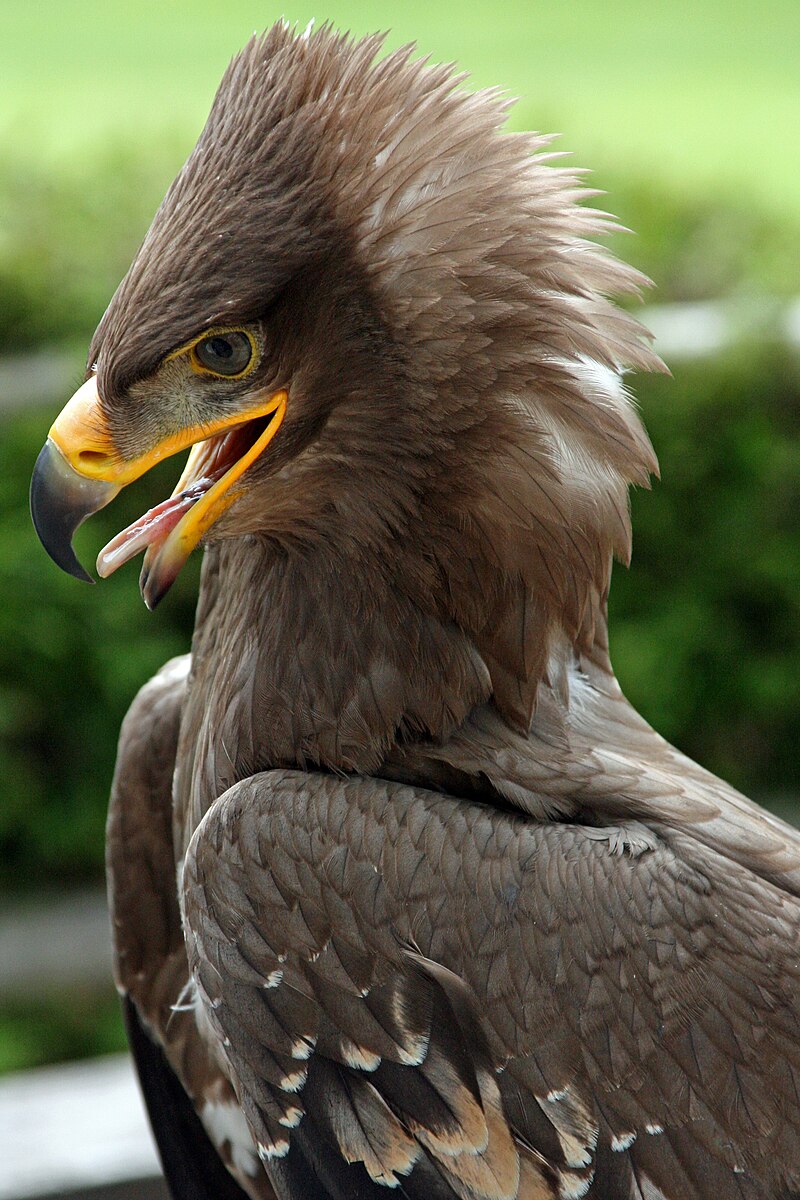Steppe eagle egg hatching is a captivating process that unfolds over several weeks, revealing the remarkable adaptations and resilience of these majestic birds. From the initial stages of incubation to the triumphant emergence of the eaglet, this journey is a testament to the wonders of nature.
The Incubation Period
The incubation period for steppe eagle eggs typically lasts between 39 and 45 days. During this time, the embryo undergoes a series of remarkable transformations, including the development of leg scales, tiny talons, and plantar food pads. Additionally, the natal down and the internalization of the egg yolk sac occur, preparing the eaglet for its eventual hatching.
Egg Characteristics
 Image source: Steppe Eagle by Fimb
Image source: Steppe Eagle by Fimb
Steppe eagle eggs are slightly smaller than those of the Golden and Eastern Imperial Eagles, with an average size of 73.81 x 55.85 mm. These eggs are white in color, with a distinctive pattern of ochre and light-brown spots of varying intensity and size. The shell is thick and coarse-grained, providing protection for the delicate embryo within.
Clutch Size and Brood Dynamics
Steppe eagles typically lay 1-4 eggs in a clutch, with 1-2 chicks being the more common outcome. Due to the staggered incubation period, the juvenile steppe eagles can differ significantly in age, particularly in larger broods. This age gap can be quite substantial, as the interval between the laying of the penultimate and last eggs can be quite long.
The Hatching Process
Hatching is a critical stage in the life cycle of steppe eagles, involving a series of intricate steps. The process begins with the embryo taking up nearly all the space in the egg and piercing the internal membrane to start breathing air. The eaglet then uses its egg tooth to rub against the shell, cutting a small hole and slowly rotating its body to create a ring around the shell. Finally, the eaglet works itself free of the shell membranes and halves, completing the hatching process.
Juvenile Development and Independence
Juvenile steppe eagles remain in the nest for 58-65 days before becoming fully independent at the age of 75-80 days. During this time, they undergo a remarkable transformation, growing in size and strength, and honing their hunting and survival skills.
Conservation Challenges
In recent years, the steppe eagle has faced significant threats to its population, including habitat destruction due to the expansion of intensive agriculture and electrocution on power lines. As a result, the species has experienced a decline in its distribution range, with extinction in several eastern European countries and a significant reduction in breeding populations in other areas. The conservation status of the steppe eagle has been classified as “Endangered” by BirdLife International, highlighting the urgent need for conservation efforts to preserve this raptor species.
Conclusion
The steppe eagle egg hatching process is a captivating and intricate journey, showcasing the remarkable adaptations and resilience of these majestic birds. From the initial stages of incubation to the triumphant emergence of the eaglet, this process is a testament to the wonders of nature. However, the steppe eagle faces significant conservation challenges, and it is crucial that we take action to protect this species and its habitat for future generations to marvel at.
References:
– Wikipedia – Steppe Eagle
– European Raptors – Steppe Eagle
– Russian Raptor Research and Conservation Network – Steppe Eagle
– YouTube – Steppe Eagle Nest Cam
– Raptor Resource Project – Bald Eagle Egg Hatching

